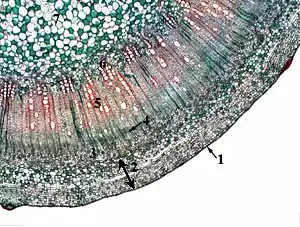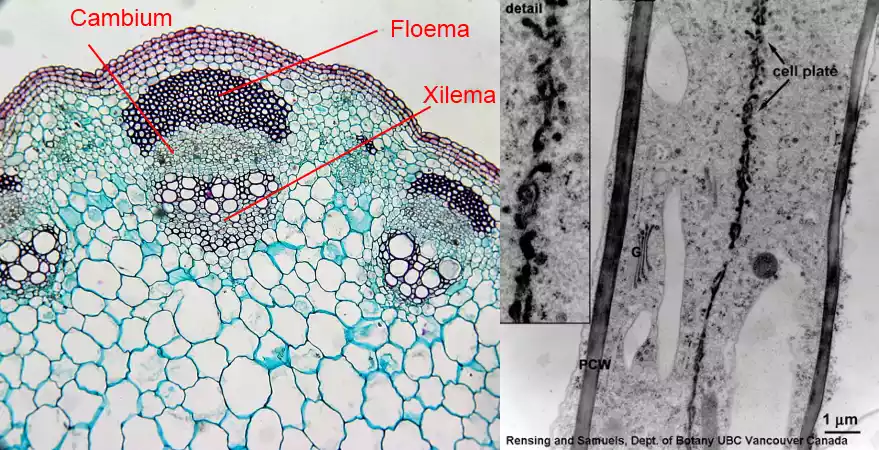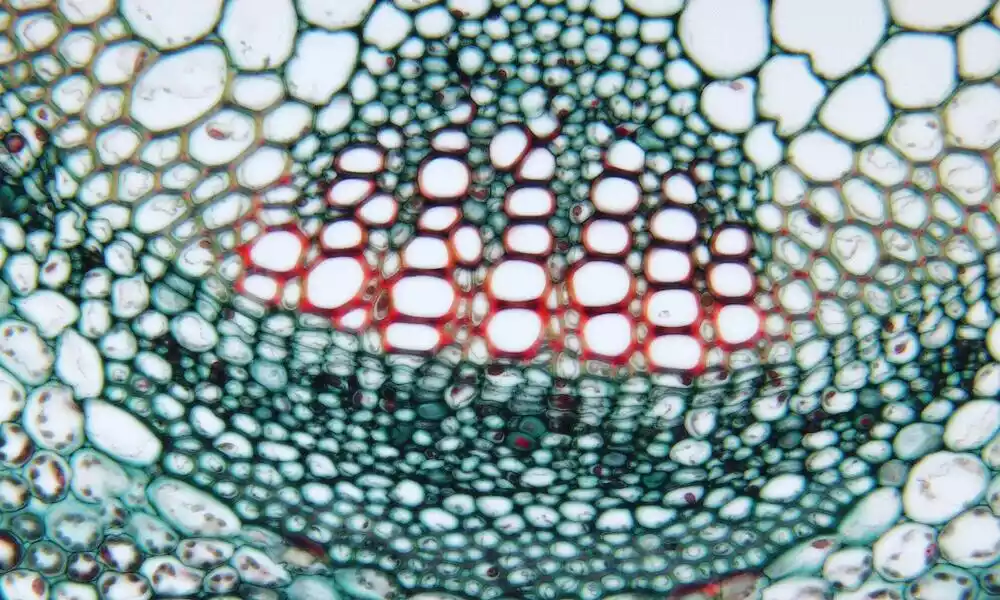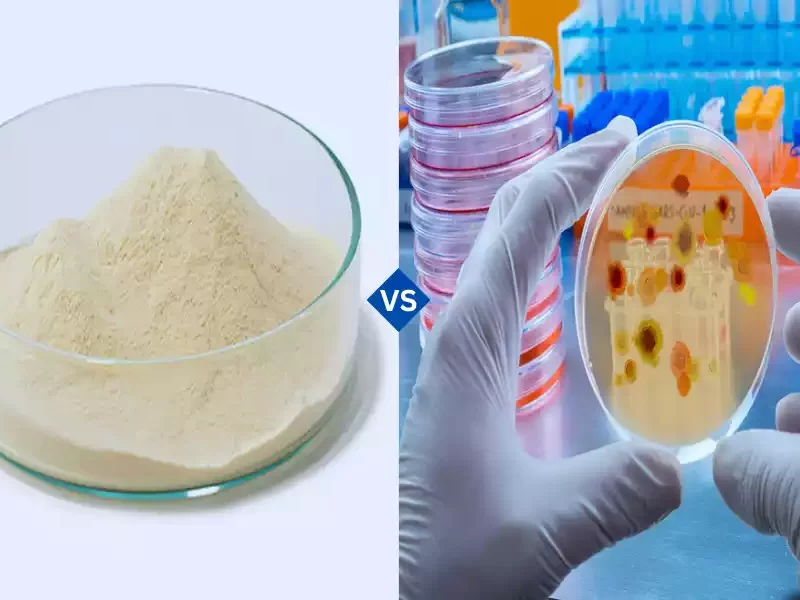Fascicular Cambium and Interfascicular Cambium are two significant components in the intricate world of plant growth. These cambium layers play vital roles in the secondary growth of plants, contributing to their width and structural integrity.
Fascicular Cambium resides within vascular bundles, generating new cells towards the inside, while Interfascicular Cambium connects bundles and aids in stem width expansion. Together, they orchestrate the dynamic process of plant growth and offer insights into environmental conditions through growth rings.
Definition of Fascicular Cambium

Fascicular cambium, also known as intrafascicular cambium, is a type of meristematic tissue found in the stems of dicotyledonous plants. It is responsible for secondary growth in plants, particularly in the development of secondary xylem (wood) and secondary phloem.
Fascicular cambium originates from the procambium tissue during the primary growth phase of the plant and is located within the vascular bundles, specifically between the primary xylem and primary phloem.
It actively divides and differentiates, producing new cells that become part of the secondary vascular tissues, contributing to the growth in girth or diameter of the stem. This growth is essential for the structural support and transport of water, nutrients, and sugars within the plant.
Definition of Interfascicular Cambium

Interfascicular cambium, also known as interfascicular parenchyma or interfascicular tissue, is a type of meristematic tissue found in the stems of dicotyledonous plants. It plays a crucial role in secondary growth, specifically in the widening or radial expansion of the stem. Interfascicular cambium is distinct from fascicular cambium and is located in the regions between vascular bundles, typically in the pith or medullary rays of the stem.
This cambium forms during the secondary growth phase of a plant’s life and is derived from parenchyma cells in the interfascicular regions. Unlike fascicular cambium, which is located within the vascular bundles, interfascicular cambium connects the fascicular cambia from adjacent vascular bundles.
It actively divides and gives rise to secondary xylem and secondary phloem cells, contributing to the increase in stem diameter or girth. This radial growth is essential for the overall structural support and transport of water, nutrients, and sugars throughout the plant as it continues to grow and mature.
Collaboration Between Fascicular and Interfascicular Cambium
Collaboration between Fascicular Cambium and Interfascicular Cambium is essential for the radial expansion and overall growth of dicotyledonous plant stems. These two cambia work together in a coordinated manner to ensure the development of a strong and efficient vascular system. Here’s how they collaborate:
- Secondary Growth: Both Fascicular Cambium and Interfascicular Cambium are involved in secondary growth, which increases the girth or diameter of the stem. Fascicular Cambium generates secondary xylem (wood) and secondary phloem within vascular bundles, while Interfascicular Cambium connects these bundles and contributes to radial growth.
- Exchange of Cells: The cells produced by Fascicular Cambium, such as secondary xylem and secondary phloem, need to move radially to become part of the stem’s structure. Interfascicular Cambium plays a critical role in facilitating this radial movement of cells between vascular bundles. It acts as a bridge connecting the fascicular cambia.
- Stem Strength: The coordinated activity of both cambia results in the uniform growth of secondary vascular tissues throughout the stem. This contributes to the stem’s strength and rigidity, ensuring it can support the weight of the plant and withstand environmental stressors.
- Efficient Transport: A well-developed vascular system with both secondary xylem and secondary phloem allows for efficient transport of water, nutrients, and sugars throughout the plant. This is essential for the plant’s metabolic processes and overall health.
- Balanced Growth: The collaboration between Fascicular and Interfascicular Cambium helps ensure balanced radial growth. Without this coordination, the stem might not expand evenly, leading to structural weaknesses or deformities.
Fascicular Cambium and Interfascicular Cambium collaborate by producing and connecting secondary vascular tissues, respectively, leading to the radial expansion and strengthening of the stem. This collaboration is essential for the overall health and development of dicotyledonous plants.
Fascicular Cambium and Interfascicular Cambium in comparison table
Here’s a comparison table highlighting the differences between Fascicular Cambium and Interfascicular Cambium:
| Aspect | Fascicular Cambium | Interfascicular Cambium |
|---|---|---|
| Location | Within vascular bundles | Between vascular bundles, in pith or medullary rays |
| Origin and Development | Derived from procambium during primary growth | Derived from interfascicular parenchyma cells during secondary growth |
| Function | Generates secondary xylem and phloem within vascular bundles | Connects fascicular cambia and facilitates radial growth of the stem |
| Timing | Active during primary growth | Forms during secondary growth |
| Role in Growth | Increases stem girth and strength | Allows radial expansion of the stem |
| Primary Purpose | Formation of secondary vascular tissues | Facilitating radial growth in the stem |
| Location in Stem | Inside vascular bundles | Between vascular bundles or surrounding pith/medullary rays |
| Cell Differentiation | Gives rise to secondary xylem and phloem cells within vascular bundles | Gives rise to secondary xylem and phloem cells, connecting vascular bundles |
This table provides a clear comparison of the two types of cambium tissues, highlighting their differences in location, origin, function, timing, and their respective roles in plant growth.
Similarities of Fascicular Cambium and Interfascicular Cambium
Fascicular Cambium and Interfascicular Cambium, despite their differences, share these similarities:
- Secondary Growth Role: Both contribute to secondary growth by generating secondary vascular tissues (xylem and phloem) that aid in plant structural support and nutrient transport.
- Meristematic Nature: They are meristematic tissues with actively dividing cells, enabling continuous growth in stem diameter.
- Formation of Secondary Tissues: Both types of cambium tissues are involved in the formation of secondary vascular tissues, either within vascular bundles (fascicular) or between bundles (interfascicular).
- Importance for Plant Development: Both cambia are vital for overall plant development, facilitating growth and adaptation to the environment.
These shared characteristics underscore their importance in plant growth and the establishment of a robust vascular system.
Future Research and Discoveries
Future research and discoveries will likely focus on:
- Advancing AI and quantum computing.
- Revolutionizing genomics and personalized medicine.
- Tackling climate change through new technologies.
- Exploring space and exoplanets.
- Harnessing nanotechnology for various applications.
- Enhancing healthcare with digital solutions.
- Innovating in renewable energy and materials.
- Unraveling the mysteries of the human brain.
- Addressing ethical concerns in AI.
- Protecting biodiversity and ecosystems.
- Shaping the future of finance with blockchain.
- Strengthening cybersecurity measures.
Collaboration and interdisciplinary approaches will drive these advancements.
Finishing
Fascicular cambium and Interfascicular cambium are pivotal players in the intricate symphony of plant growth, orchestrating the development of vascular tissues that sustain these remarkable organisms. Understanding their roles enhances our appreciation of nature’s ability to adapt and flourish in diverse environments.



